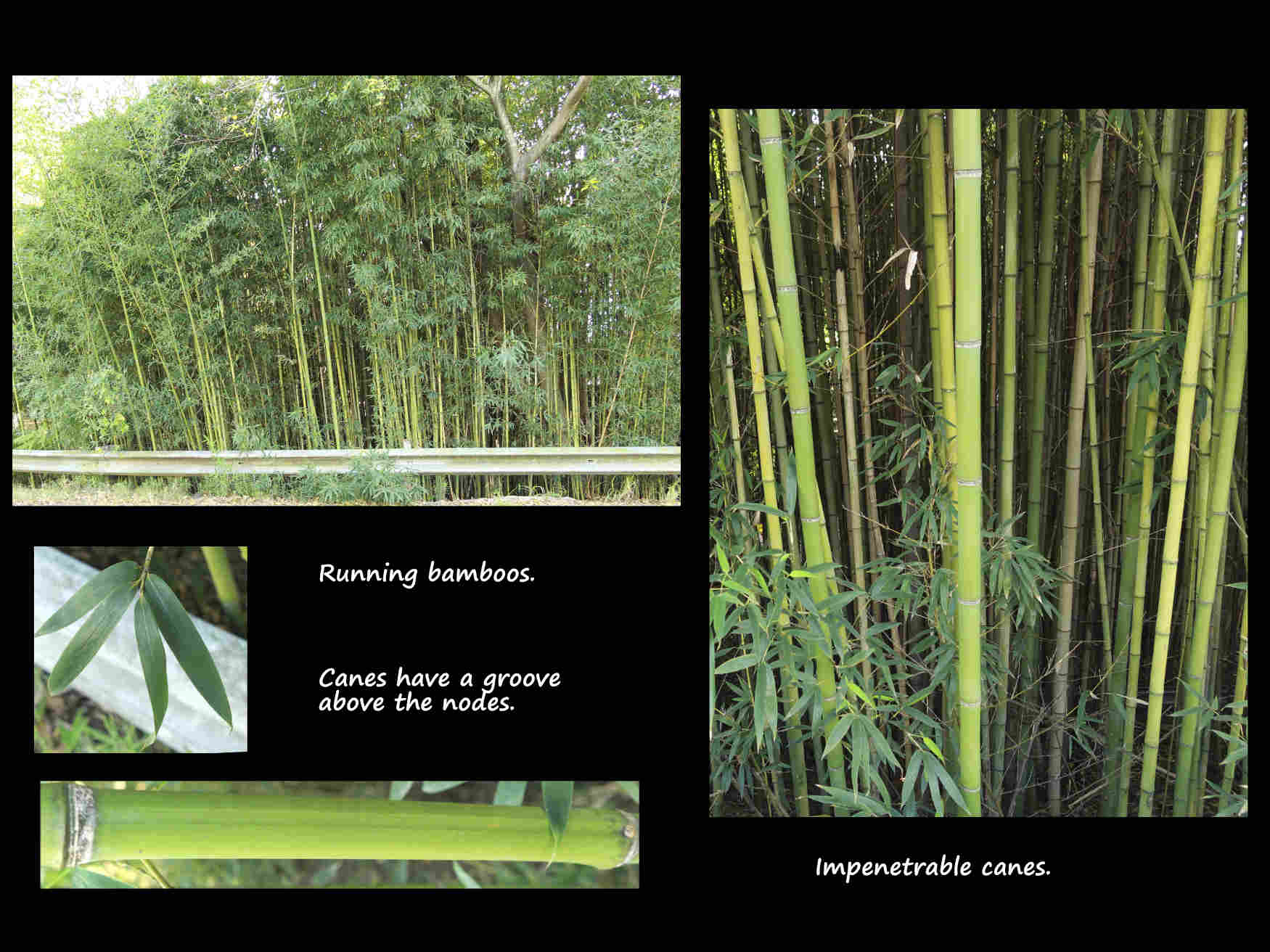Phyllostachys.
Family Poceae > Subfamily Bambusoideae > Tribe Arundinarieae > Subtribe Arundinariinae.
There are around 30 (50 to 62) species of running bamboos that are mainly from China.
The species are difficult to identify as many are very similar.
Phyllostachys aurea, P. bambusoides and P. nigra are naturalised in parts of S.E. Queensland.
There are also many cultivars bred for the variously coloured culms.
Plants have a monopodial rhizome system resulting in them spreading over large areas.
The woody mostly erect culms are from 2.5 up to 20 m high and sometimes 35 m.
They may have a zigzagged appearance with oblique nodes.
The nodes are swollen and there is often a prominent supranodal ridge.
The hollow internodes are up to 20 cm across.
The internodes can all be of equal length or the lower ones may be shorter.
The characteristic feature of the genus is a distinct flattened area or a single or double
groove above each branch bud that runs the full length of the internode.
The deciduous culm sheaths usually have auricles with long bristles.
The linear to triangular or lanceolate blade is curved or bent backwards (reflexed).
There are some hairs on the outer surface.
There are no branches on the lower part of the culms except maybe 1 on the lowest node.
Nodes above mid-culm level have 2 dominant branches with rarely a much small one in between.
The leaf blades are lanceolate, linear or oblong with marked cross veins giving a tessellated appearance.
On each twig the lower leaves are shorter and wider than the upper ones.
The midrib is prominent and the base has no petiole or a very short pseudopetiole.
The deciduous leaf sheaths may have no auricles but when present they have setae.
The usually conspicuous ligule is a membrane with or without hairs.
Flowering very rarely occurs but inflorescences are said to have spikelets up to 8 cm long.
Each spikelet has up to 3 basal glumes and 7 florets.
The florets have a lemma and palea, 2 or 3 lodicules, 3 stamens, an ovary with
an apical appendage and one style with 2 or 3 stigmas.
(Flora of China Vol. 22 Page 9, 114, 163 and other references.)
J.F.


